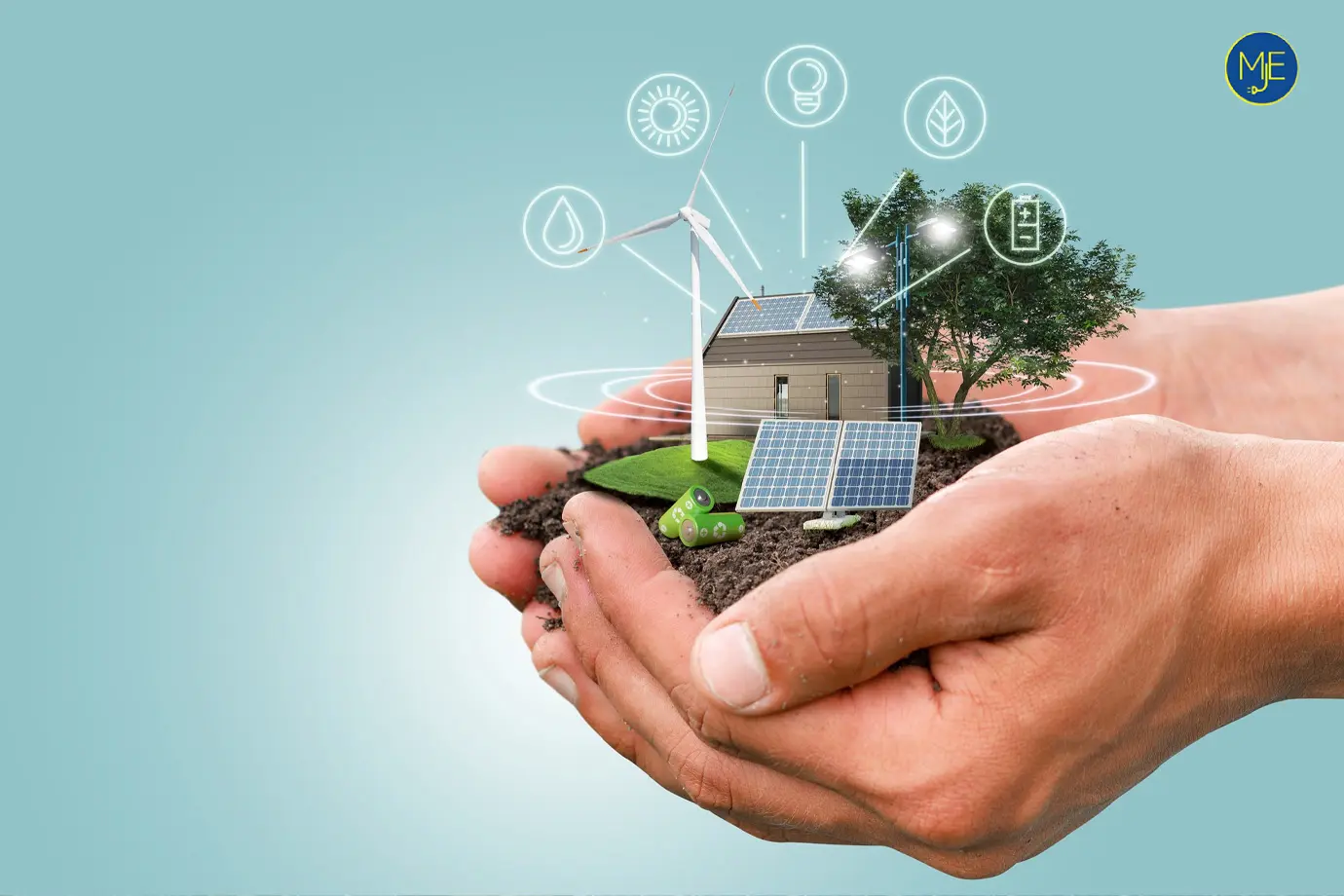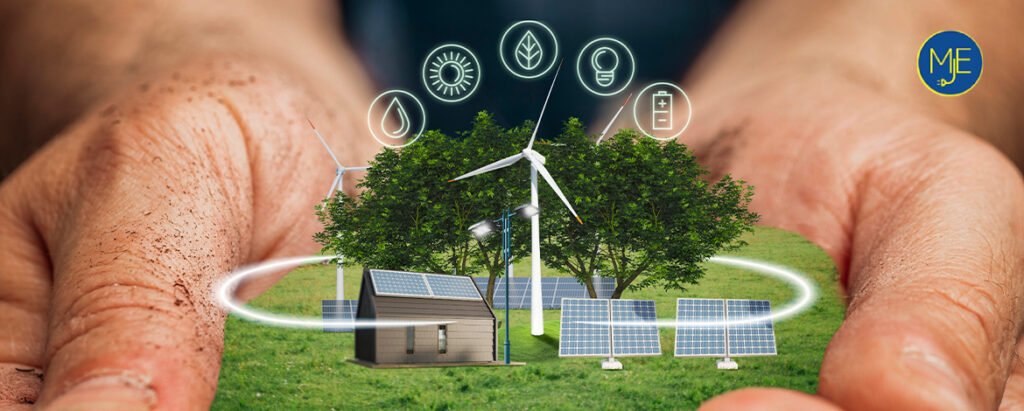Countries all over the world are using electrification to help the environment. In Australia, this is especially important because there is a lot of sun and wind that can be used to make electricity. This helps cut down on pollution, makes energy more reliable, lowers energy costs over time, and creates new jobs in clean energy. This is good for both the environment and the economy.
In this article, we will talk about electrification and why it matters, in greater detail.
What does electrification mean?

Electrification means switching from using things like oil and coal to using electricity to power different systems and technologies. This is important for homes, businesses, and factories.
Additionally, it’s not just about using electricity, but also about using electricity that comes from clean sources like wind and solar.
This change is good because it helps us use energy more wisely and protects the environment. So, when we ask, “What does electrification mean?” we’re talking about using electricity in a way that is better for our planet.
Types of Electrification in Australia
In Australia, electrification takes different forms depending on where and how it’s used. Here are three main types:
Grid Electrification
This type expands and improves the electrical network that delivers power to homes and businesses. It often includes adding renewable energy, like solar or wind power, to the system. This helps cities and busy areas use less fossil fuel.
Off-Grid Solutions
These are important for places in Australia that are far from the main electrical network. Off-grid systems use solar panels, wind turbines, or small water-powered generators to create electricity on their own. This kind of setup is vital for giving power to remote homes and worksites.
Building Electrification
This focuses on changing things inside buildings to use electricity instead of fossil fuels. For example, replacing a gas heating system with an electric one. This change is becoming popular in houses, offices, and factories, especially in big cities like Melbourne and Sydney.
These types help Australia use energy that’s better for the environment and cut down on pollution. Each type has a special role in making energy use smarter and cleaner.
Types of Electrification in Residential, Commercial, and Industrial Sectors in Australia
Electrification is changing how homes, businesses, and factories in Australia use energy. Here’s how it works in different sectors:
Residential Electrification
In homes, especially in places like Ballarat, Victoria, people are using more electric solutions. Many are installing solar panels to make electricity from the sun and using electric heat pumps to keep their homes warm or cool. Some homes also use batteries to store solar energy, so they can use it even when it’s cloudy or at night. This helps them rely less on the main power grid and save money on energy bills.
Commercial Electrification
In the business world, including offices and shops, there’s a big move towards using electric equipment. For instance, shopping centers and office buildings in Victoria are putting in charging stations for electric vehicles. Many businesses are also replacing old lights with energy-saving LED lights and updating their heating and cooling systems to run on electricity. This helps them use less energy and reduce pollution.
Industrial Electrification
Factories and industries in places like Geelong and Ballarat are starting to use electric machines instead of those that run on diesel. This includes electric forklifts for moving goods and electric boilers for creating steam, which is important in making food and in chemical production. Using electric machines helps factories work more cleanly and efficiently.
These changes in homes, businesses, and industries show how Victoria is working towards using cleaner, electric power to help the environment and improve energy use.
Technological Advances and Innovations in Electrification
Electrification is moving forward quickly thanks to new technologies. These technologies help us use electricity better now and will continue to improve how we get and use electricity in the future.
Recent Technological Innovations
Smart Grid Technology: Smart grids are like advanced electricity networks that can automatically manage and adjust electricity flow. They make it easier to use electricity from renewable sources like the sun and wind and help keep the electricity supply stable and efficient.
Battery Storage Solutions: New battery technologies are important because they can store extra electricity when we have more than we need, like on sunny or windy days. Later, when there’s less electricity being made, we can use the stored energy. This helps make sure we have a steady supply of electricity.
Electric Vehicles (EVs) and Charging Stations: Electric cars are becoming more common, and they are better for the environment than regular cars. Improvements in battery life and faster charging times, along with more places to charge electric cars, are making them a more practical choice for more people.
Future Technologies in Electrification
Wireless Power Transmission: In the future, we might be able to transfer electricity without wires, which could make setting up electricity easier and cheaper.
Enhanced Energy Efficiency Technologies: Future technologies will also help buildings and factories use less electricity. For example, newer air conditioning systems and lights will use electricity more efficiently and do a better job.
AI in Grid Management: Artificial intelligence, or AI, will help manage electricity better by predicting when we’ll need more or less electricity. This helps make sure we use electricity efficiently and make the most out of renewable energy.
These technologies are helping us use electricity in smarter ways and are leading us toward a future where all our energy is clean and sustainable.
Challenges in Electrification
Moving towards using electricity in more areas of our lives is a big step towards a cleaner environment, but there are several big challenges we need to overcome.
Economic Challenges
High Costs: Switching to electric systems can be expensive. This includes costs for new electric equipment, setting up new power stations, and updating the electricity networks.
Need for More Money: Both governments and private companies need to spend a lot of money on these changes, and sometimes it’s hard to get these investments because the benefits might take a while to show.
Solutions:
Help from the Government: The government can give rebates, like tax breaks or loans with low interest, to encourage more people and businesses to switch to electric systems.
Working Together: Governments and private companies can work together to share the costs and benefits, making it easier to fund these big projects.
Infrastructural Challenges
Old Systems: In many places, especially poorer countries, the existing systems for electricity are too old or not good enough to handle more electricity use.
Not Enough Charging Places: For electric cars, one big problem is that there aren’t enough places to charge them, especially for long trips.
Solutions:
Making Better Systems: Governments should focus on fixing and improving the electricity networks so they can support new electric technologies.
More Charging Stations: Building more places to charge electric cars will make it easier for people to use them everywhere.
Technological Challenges
New Technologies Aren’t Perfect: Some of the new electric technologies are still being developed and aren’t ready for everyone to use because they might not work well enough yet.
Hard to Fit Together: It can be tricky to make these new electric systems work well with the old systems, especially when the power from sources like the sun and wind can change a lot.
Solutions:
Support for Innovation: More money should go into research to make these technologies better and to find new solutions.
Clear Rules: There should be clear rules on how to connect new electric technologies with the old systems to make sure everything works smoothly.
By tackling these challenges with clear plans and support, we can make it easier to switch to electricity in more parts of our lives, which is good for the planet.
Why Electrification Matters Today
Electrification is very important because it helps us use cleaner and smarter energy.
By using electricity instead of fossil fuels, we can reduce harmful pollution that affects our climate. Electrification also makes our energy use more efficient and supports using renewable energy like solar and wind. This helps protect the environment and ensures we have enough energy for the future.
Over To You
In this article, we’ve looked at what electrification is, the different types it includes, the new technologies helping it, and the challenges it faces. We’ve seen how important electrification is for making our energy cleaner and more efficient.
Everyone needs to support and join in electrification efforts. You can help by learning more about it, supporting good energy policies, or joining local projects that make our energy cleaner.
At MJ Electrical, we are working hard to support these clean energy projects. We can help you with Installation of Solar Panels, Energy Efficiency Upgrades, Battery Storage Systems Installation, Smart Home and Building Automation, Upgrading Electrical Panels and Infrastructure, Electrical Inspections & Consultations, and Custom Electrification Solutions.
Get in touch with us to find out how you can join in making a difference for a cleaner, greener future.
FAQs on Electrification
What is electrification?
Electrification is when we use electricity instead of oil or coal for power.
Why is electrification important?
It helps us use less oil and coal, which is better for the environment.
What kinds of electrification are there in Australia?
In Australia, electrification can be in homes, businesses, or away from the main power grid.
What problems does electrification have?
It can be expensive, and sometimes our old systems aren’t ready for new electric technology.
How can I help with electrification?
You can learn about it, support good energy laws, or use electric systems at home.





